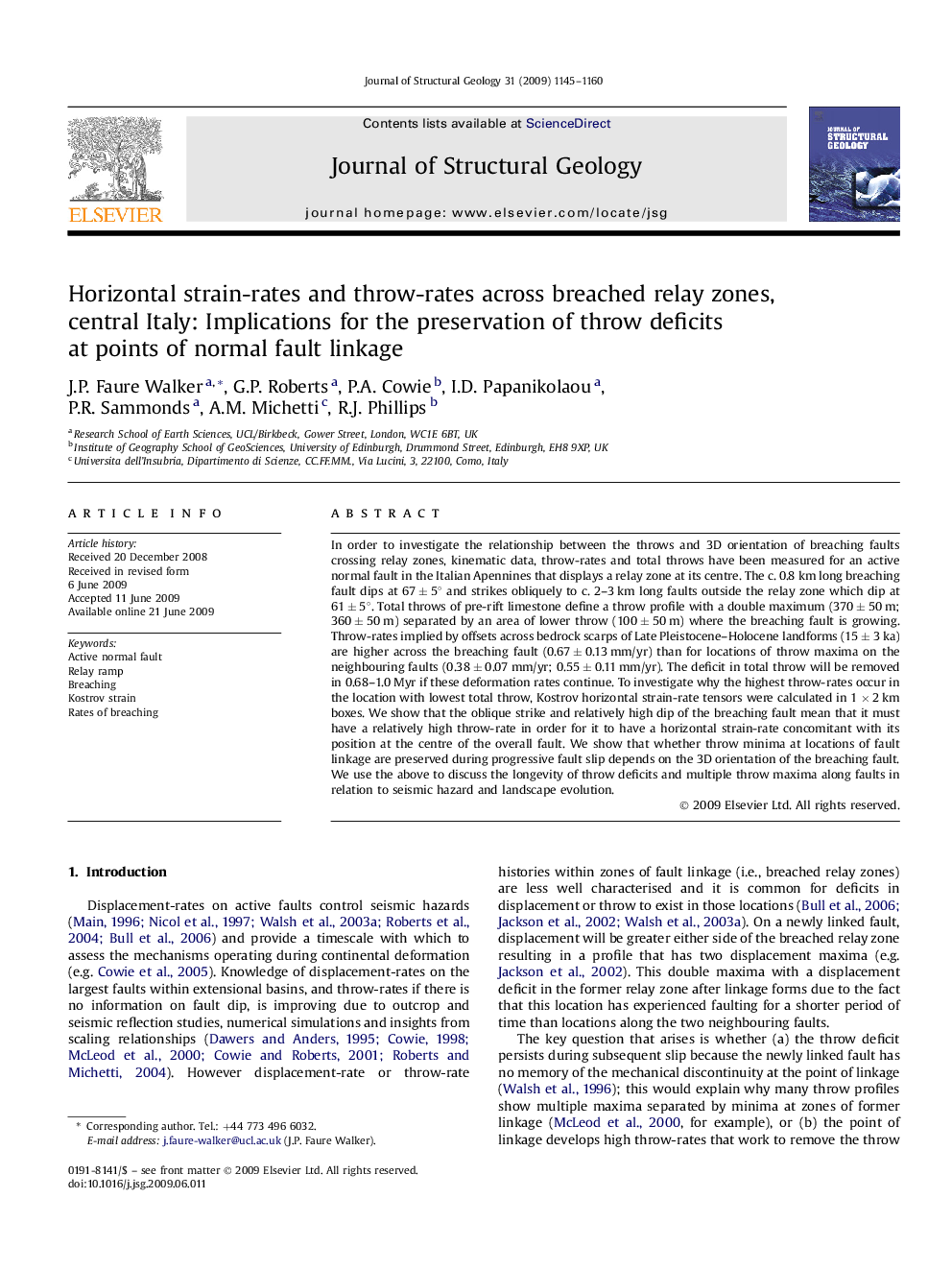| کد مقاله | کد نشریه | سال انتشار | مقاله انگلیسی | نسخه تمام متن |
|---|---|---|---|---|
| 4733827 | 1357054 | 2009 | 16 صفحه PDF | دانلود رایگان |

In order to investigate the relationship between the throws and 3D orientation of breaching faults crossing relay zones, kinematic data, throw-rates and total throws have been measured for an active normal fault in the Italian Apennines that displays a relay zone at its centre. The c. 0.8 km long breaching fault dips at 67 ± 5° and strikes obliquely to c. 2–3 km long faults outside the relay zone which dip at 61 ± 5°. Total throws of pre-rift limestone define a throw profile with a double maximum (370 ± 50 m; 360 ± 50 m) separated by an area of lower throw (100 ± 50 m) where the breaching fault is growing. Throw-rates implied by offsets across bedrock scarps of Late Pleistocene–Holocene landforms (15 ± 3 ka) are higher across the breaching fault (0.67 ± 0.13 mm/yr) than for locations of throw maxima on the neighbouring faults (0.38 ± 0.07 mm/yr; 0.55 ± 0.11 mm/yr). The deficit in total throw will be removed in 0.68–1.0 Myr if these deformation rates continue. To investigate why the highest throw-rates occur in the location with lowest total throw, Kostrov horizontal strain-rate tensors were calculated in 1 × 2 km boxes. We show that the oblique strike and relatively high dip of the breaching fault mean that it must have a relatively high throw-rate in order for it to have a horizontal strain-rate concomitant with its position at the centre of the overall fault. We show that whether throw minima at locations of fault linkage are preserved during progressive fault slip depends on the 3D orientation of the breaching fault. We use the above to discuss the longevity of throw deficits and multiple throw maxima along faults in relation to seismic hazard and landscape evolution.
Journal: Journal of Structural Geology - Volume 31, Issue 10, October 2009, Pages 1145–1160